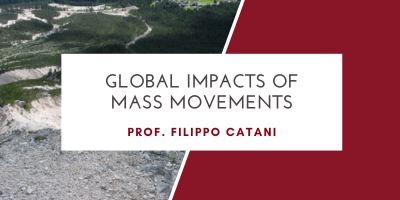Global Impacts of Mass Movements

Period: Second Semester
Course Unit Contents:
• Introduction to Mass Movements and Landslide Typologies (Definitions, processes, and classifications of mass movements;Types of landslides: falls, slides, flows, spreads, and complex movements; Historical context and importance in Earth system science). Lab Activity: Morphometric classification of landslides using Google Earth and SAGA GIS; Introduction to the Global Landslide Catalog.
• Global Distribution, Triggers, and Frequency of Landslides (Rainfall, seismicity, volcanism, and anthropogenic triggers; Global exposure patterns and vulnerability; The impact of ENSO and other climate oscillations). Lab Activity: Using NASA’s LHASA model outputs for rainfall-induced landslide hazard mapping; Analysis of event-based datasets (e.g. Italy, Taiwan, New Zealand, China).
• Sediment Budgets and the Role of Landslides (Landslide contribution to global and regional sediment fluxes; Comparison with fluvial, glacial, and aeolian transport; Cascading sediment delivery from hillslope to ocean). Lab Activity: Sediment yield estimation using available global datasets; Budget analysis: fluvial vs. landslide sources using Earth surface models (LandLab and Hylands).
• Landslides and the Carbon Cycle (Organic carbon mobilization and burial; Effects of deep-seated landslides on soil carbon pools). Lab Activity: Case study: sediment and carbon flux in Wenchuan (China); Introduction to radiocarbon and Be-10 methods for landslide chronologies.
• Extreme Events and Landscape Response (Earthquake and typhoon-induced sediment pulses; Timescales of sediment evacuation and recovery). Lab Activity: Simulating post-event sediment export using simplified models (e.g., HyLands); Time series analysis of sediment loads using remote sensing.
• Climate Change and Future Scenarios (Climate change impacts on landslide hazard and sediment regimes; Coupling of erosion, land use, and hydrology in Earth system models). Lab Activity: Modeling scenarios using global climate datasets (CMIP, RCPs); Evaluating sediment and landslide changes using Earth system model outputs.
Planned learning activities and teaching methods:
Lectures, seminars, homework with simple tasks assigned for single and team-work, computer labs.
In addition to contacting the course instructor, students with disabilities, Specific Learning Disorders (SLD), Special Educational Needs (SEN), and other health conditions can reach out to the Student Services Office - Inclusion Unit to receive more information about opportunities to access teaching with specific support and tools.
